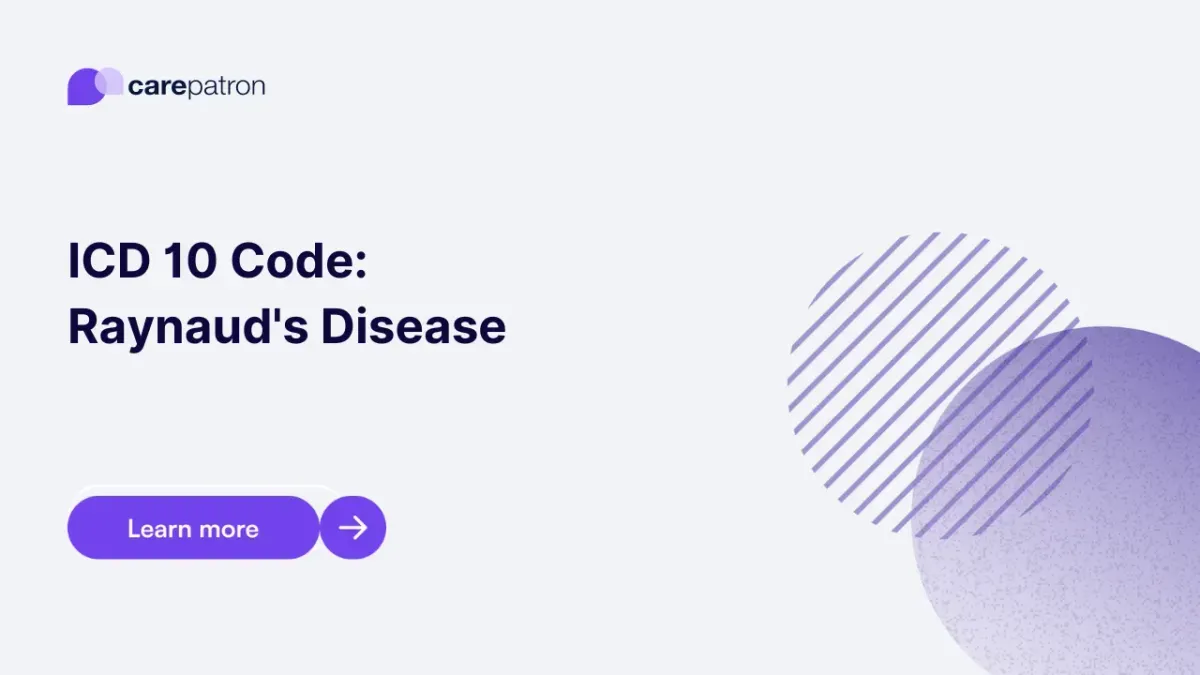
Raynaud's Disease ICD-10-CM Codes
Explore the ICD-10 codes for Raynaud's Disease to gain insight into diagnosis and billing processes—access comprehensive information about Raynaud's ICD codes.
Use Code
Commonly asked questions
The ICD-10 code for Raynaud’s disease is I73.00 if there is no gangrene, and I73.01 if gangrene is present. These codes fall under diseases of the circulatory system and are billable for clinical use.
I73.9 refers to Peripheral vascular disease, unspecified. It is used when there is a documented vascular disorder that affects circulation outside of the heart and brain but lacks specific classification.
Raynaud’s disease is a condition in which small blood vessels in the fingers and toes constrict excessively in response to cold or stress, leading to colour changes, numbness, or pain. It is an idiopathic vascular disorder and may occur on its own (primary) or as part of other systemic conditions (secondary).
EHR and practice management software
Get started for free
*No credit card required
Free
$0/usd
Unlimited clients
Telehealth
1GB of storage
Client portal text
Automated billing and online payments
